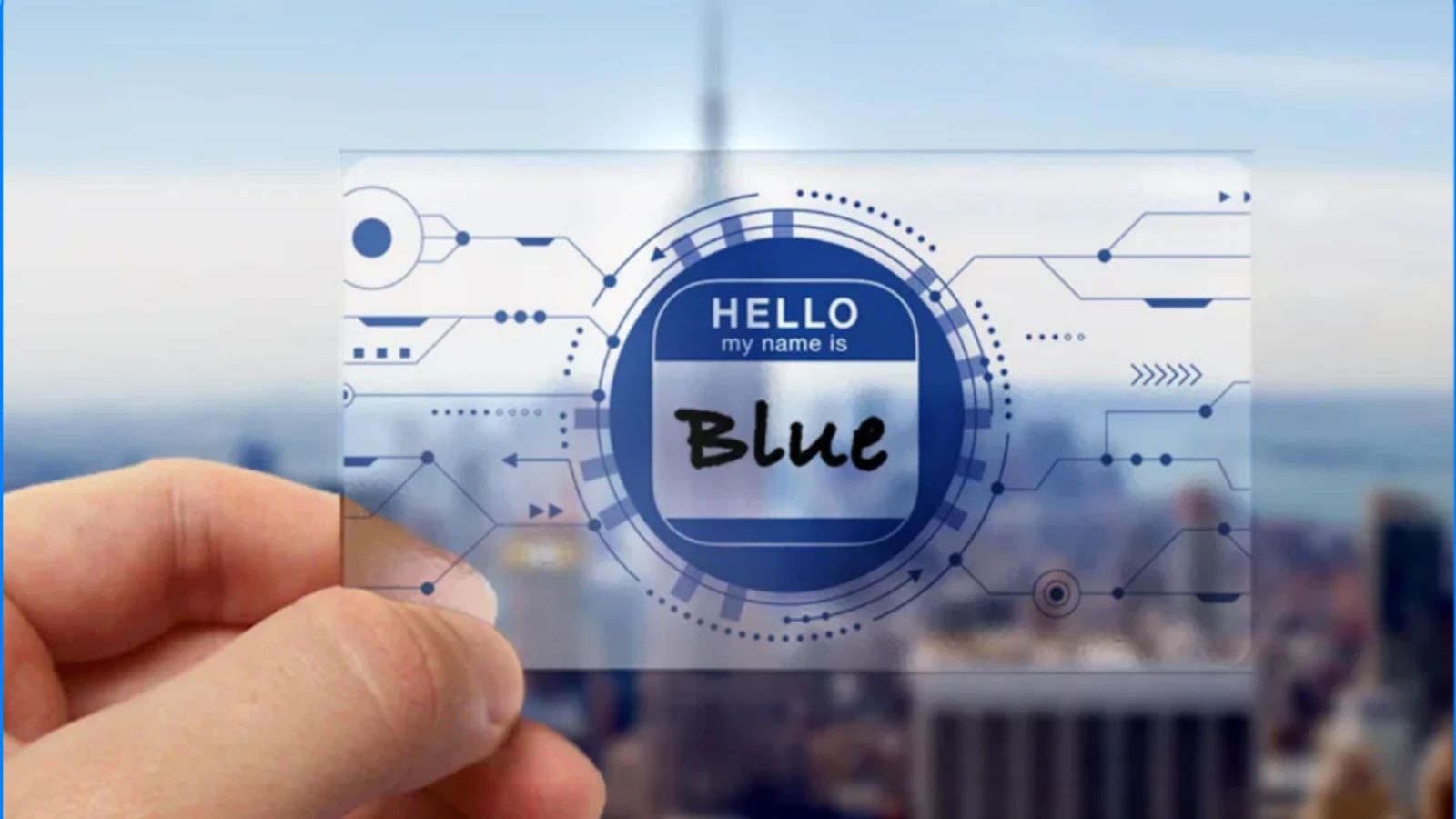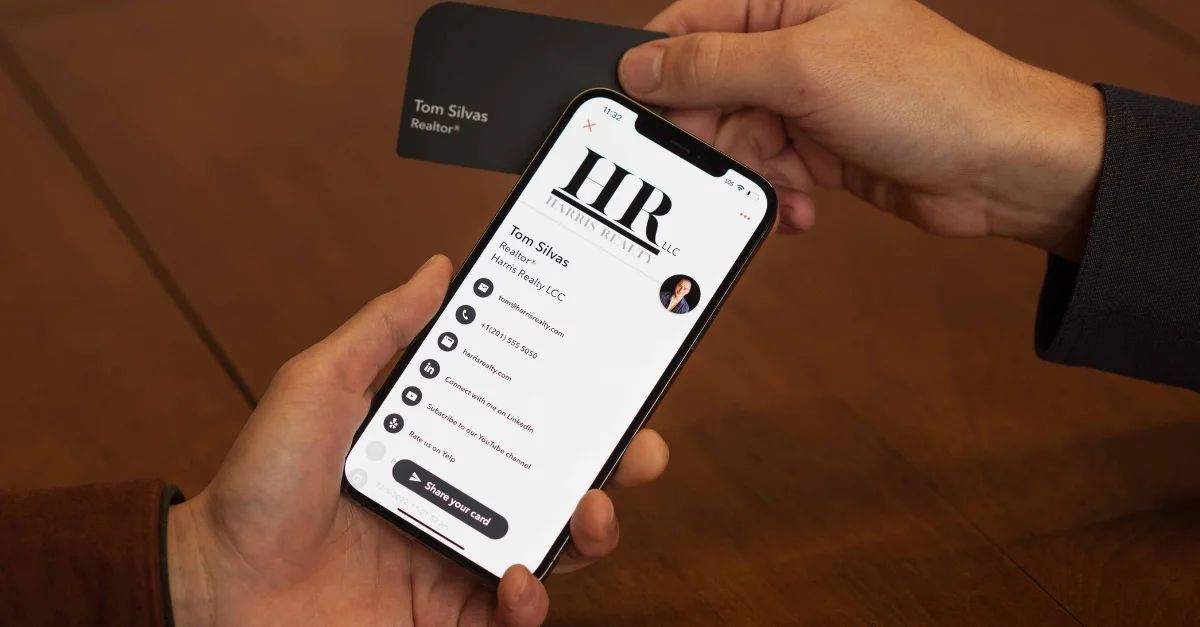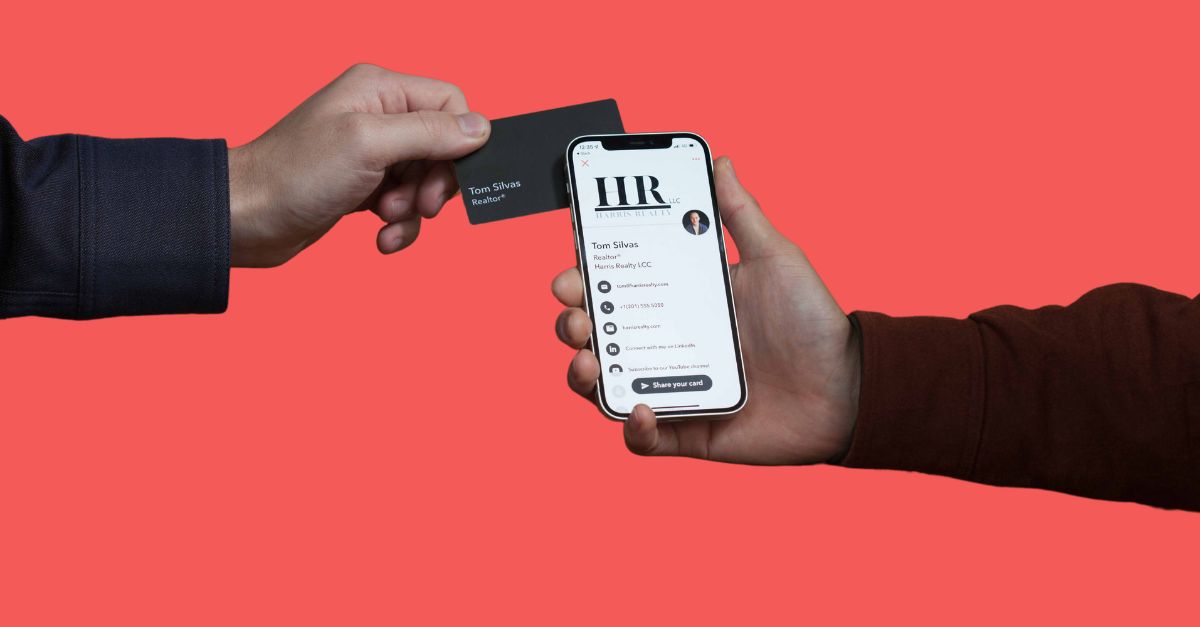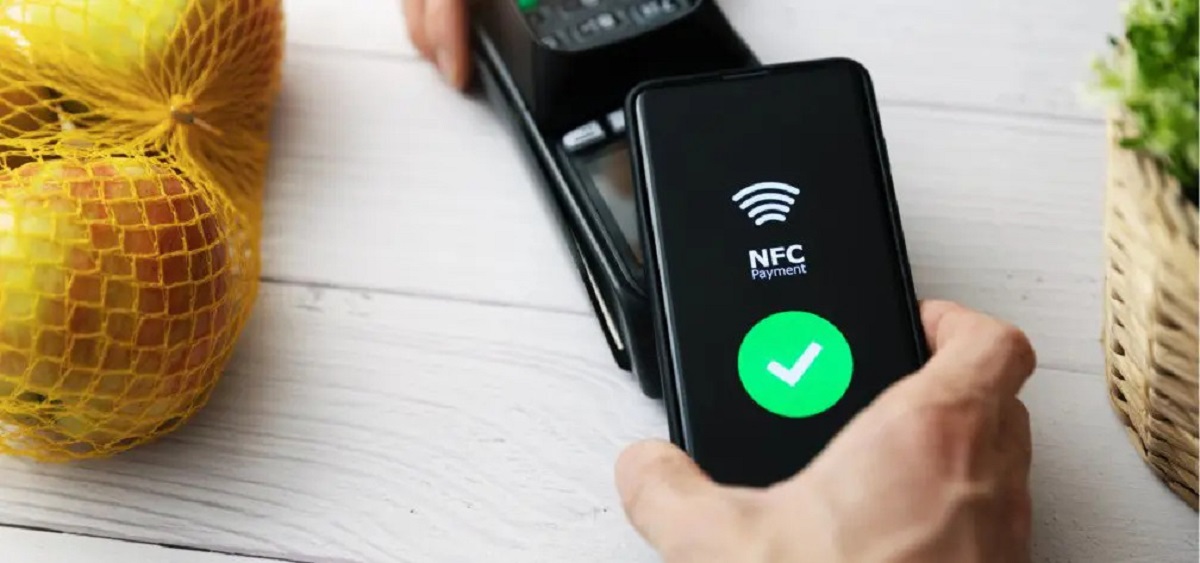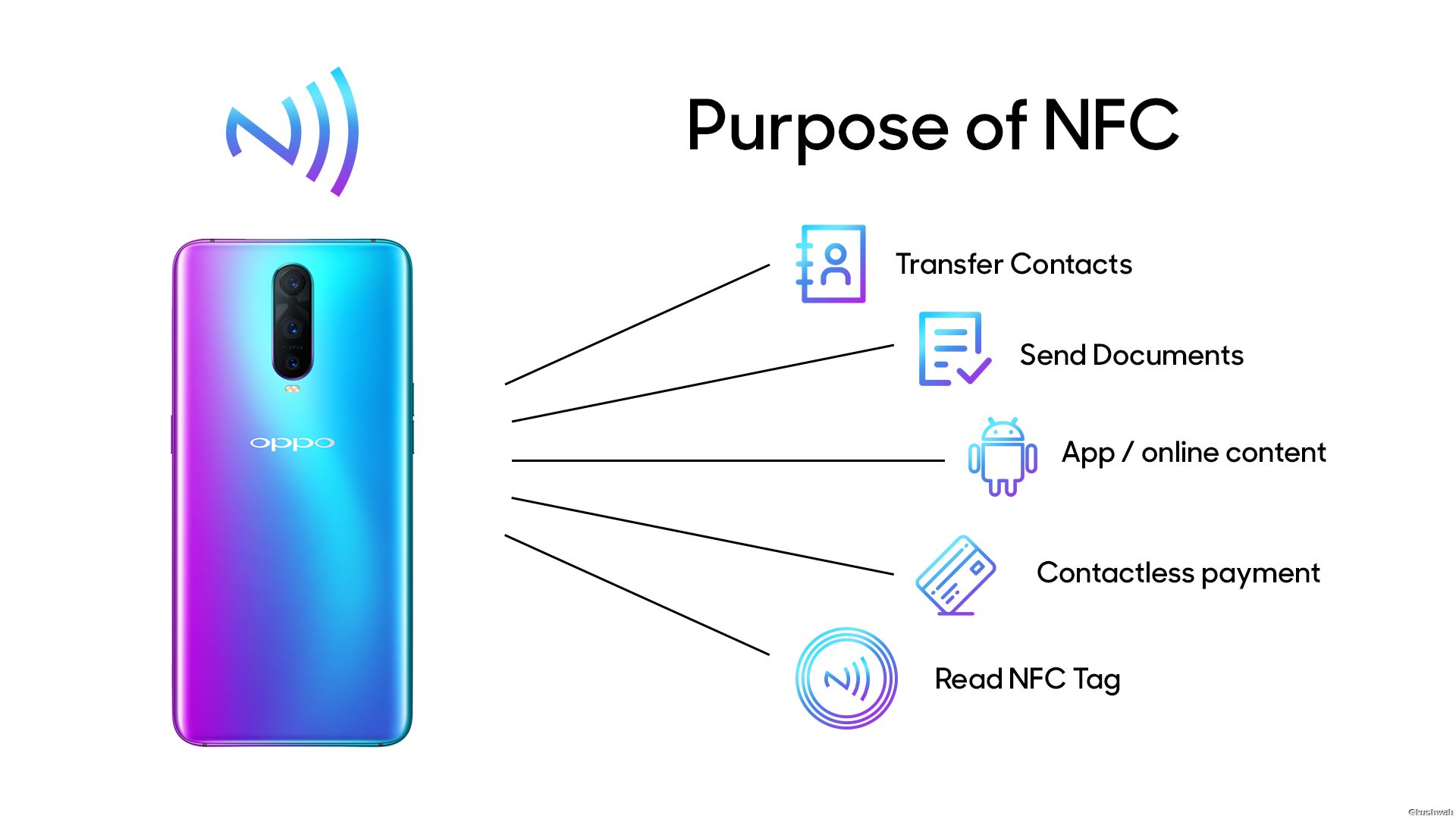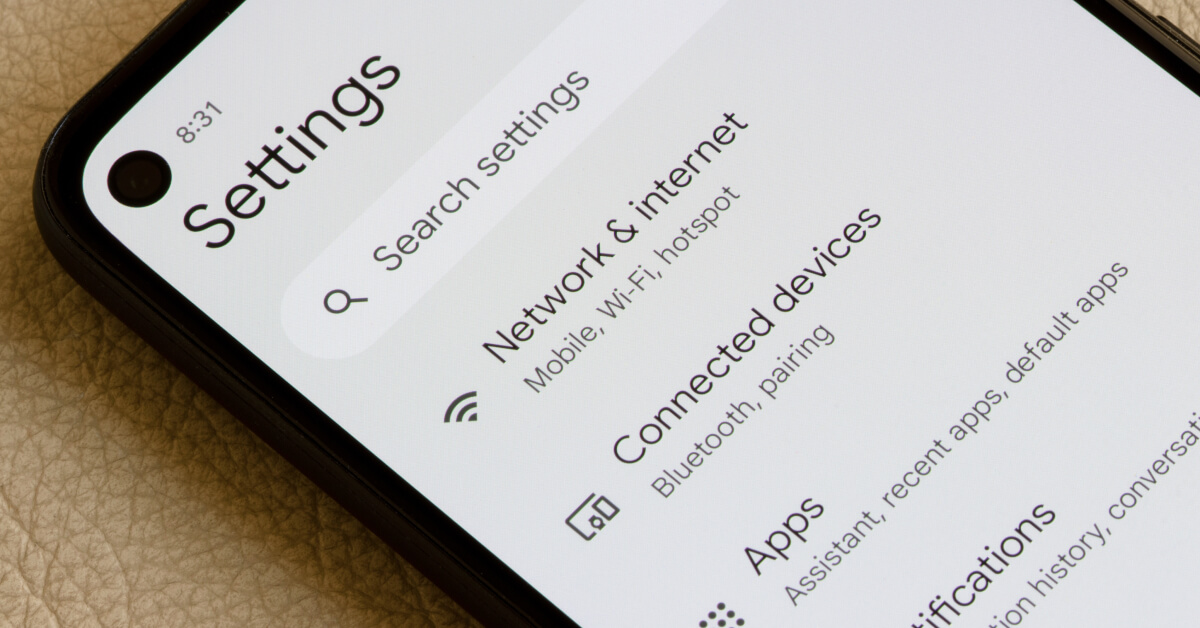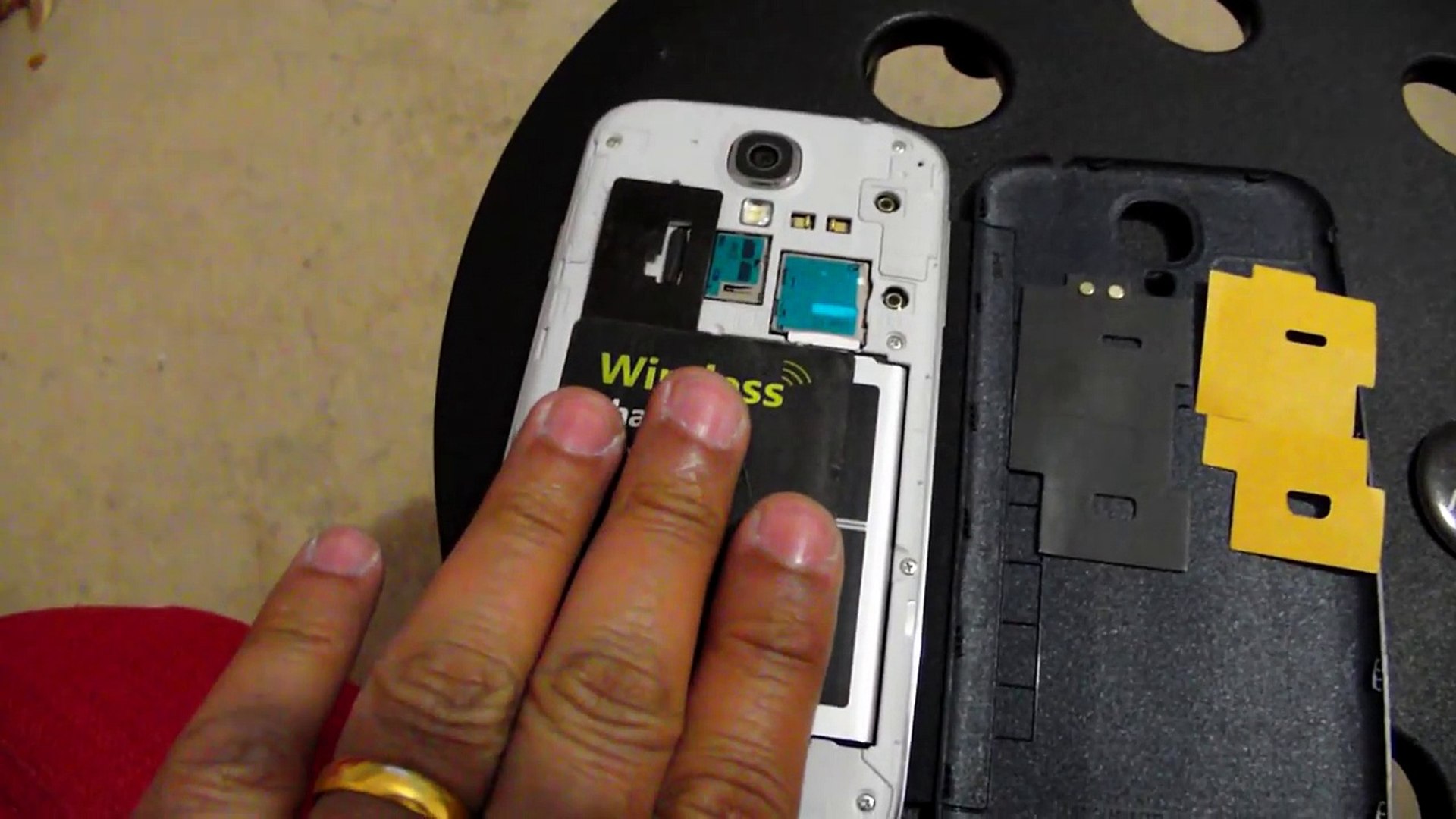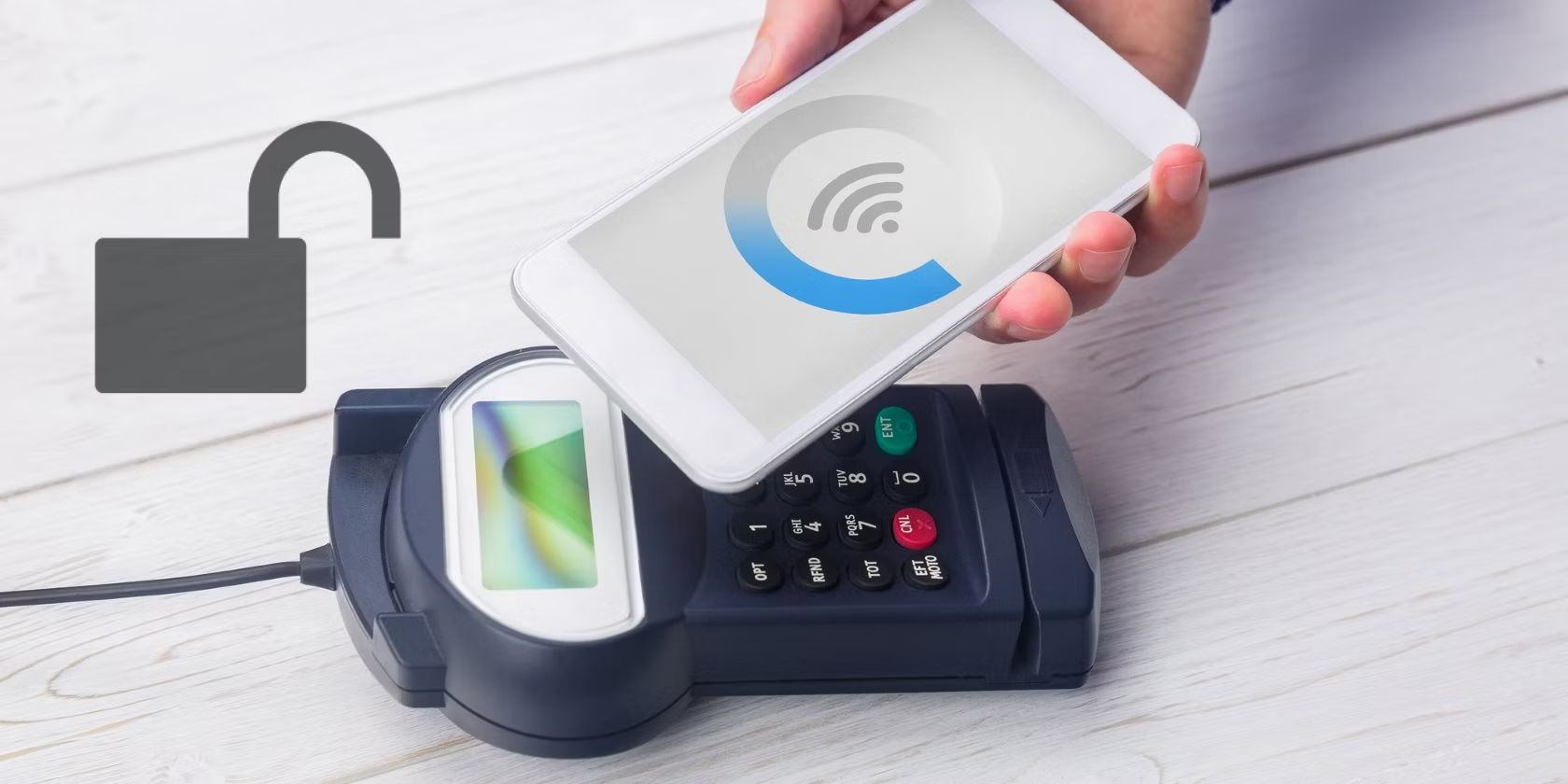Introduction
Welcome to the world of NFC (Near Field Communication) business cards! In today’s digital age, it’s crucial to leave a lasting impression on potential clients and contacts. Traditional business cards are often overlooked and end up discarded or forgotten, but NFC business cards offer a modern and interactive solution.
NFC technology allows for the seamless exchange of information between devices that are in close proximity to each other. By incorporating NFC into your business card, you can provide a memorable and convenient way for people to connect with you, access your digital portfolio, or visit your website with just a tap of their smartphone.
In this article, we will guide you through the process of creating your own NFC business card. We’ll cover everything from designing the card to programming the NFC tag and preparing it for printing. By the end, you’ll have a unique and technologically advanced business card that will leave a lasting impression on anyone who receives it.
But before we dive into the details, let’s take a closer look at what exactly NFC is, and the benefits it offers for business cards.
What is NFC?
Near Field Communication, or NFC, is a wireless communication technology that enables the exchange of data between devices when they are in close proximity to each other. It operates on the principle of electromagnetic induction, allowing for secure and rapid communication between devices by simply bringing them close together.
NFC is a key component of contactless technology, which is widely used for various applications such as mobile payments, access control, and data transfer. It is especially prevalent in smartphones, as most modern devices are equipped with NFC capabilities.
One of the main advantages of NFC is its simplicity and convenience. Unlike Bluetooth, which requires a manual pairing process, NFC allows for instant and automatic connection between devices. All you need to do is bring your smartphone close to an NFC-enabled object or device, and the data transfer will occur seamlessly.
NFC operates at a frequency of 13.56 MHz and has a range of approximately four centimeters. This close proximity requirement ensures that NFC transactions are secure and reliable, as it limits the possibility of unauthorized access or interference.
NFC tags are a fundamental aspect of NFC technology. These small, passive devices are embedded with information that can be read by an NFC-enabled device. When an NFC-enabled smartphone comes into contact with an NFC tag, it can access the stored information, such as text, URLs, or contact details.
NFC technology has revolutionized various industries, including marketing, transportation, and communication. By incorporating NFC into business cards, professionals can leverage this technology to enhance networking and brand promotion. NFC business cards offer an innovative and engaging way to share information and create memorable connections with potential clients and contacts.
Benefits of NFC Business Cards
NFC business cards offer a range of advantages over traditional paper cards, making them a powerful tool for networking and digital marketing. Here are some of the key benefits:
- Interactive and Memorable: NFC business cards provide an interactive and engaging experience for recipients. By simply tapping their smartphone on the card, they can access your digital portfolio, website, or contact information. This creates a lasting impression and sets you apart from the competition.
- Convenient and Instant: With NFC technology, sharing your information becomes effortless. There’s no need to manually type in contact details or visit a website. Recipients can instantly access your information with a simple tap, saving time and effort.
- Versatile and Customizable: NFC tags can be programmed with various types of information, such as website URLs, social media profiles, or even a personalized video message. This versatility allows you to showcase your brand and tailor the content to suit different networking situations.
- Better Data Analytics: NFC business cards can provide valuable insights into your networking efforts. By tracking and analyzing the interactions with the NFC tags, you can gather data on the number of taps, location, and user engagement. This data can help you refine your networking strategies and measure the effectiveness of your business card.
- Eco-Friendly: By opting for NFC business cards, you contribute to a greener environment. Traditional paper cards often end up in landfills, contributing to deforestation. NFC cards, on the other hand, are digital and reusable, reducing the need for paper waste.
- Enhanced Professional Image: NFC business cards demonstrate that you are technologically savvy and forward-thinking. They showcase your willingness to embrace innovation and provide a memorable experience for those you connect with.
In today’s digital age, standing out from the crowd is crucial for professional success. With the numerous benefits offered by NFC business cards, you can make a lasting impression and establish meaningful connections with clients and contacts. So, let’s dive into the step-by-step process of creating your own NFC business card.
Step 1: Designing your Business Card
The first step in creating your NFC business card is designing the layout and visual elements. While the NFC functionality adds a modern touch, it’s essential to ensure that your business card remains professional and visually appealing. Here are some tips for designing your card:
- Simplicity is Key: Keep the design clean and minimalistic to maintain a professional appearance. Avoid overcrowding the card with excessive text or images, as it can make the card appear cluttered and difficult to read.
- Include Essential Information: Your NFC business card should include basic contact details such as your name, job title, phone number, email address, and company name. Additionally, consider including your website URL and social media profiles to provide recipients with easy access to more information.
- Use High-Quality Images and Fonts: Use images and fonts that are clear and legible, even in a small format. High-quality graphics and typography contribute to a polished and professional look.
- Choose a Color Scheme: Select a color scheme that aligns with your brand and enhances visual appeal. Consider using your company’s logo colors to create a cohesive and recognizable design.
- Consider Card Size and Material: Standard business card dimensions are 3.5 inches by 2 inches. However, you may opt for a larger or custom-sized card to provide more space for design elements. Choose a durable material that can withstand daily use, such as thick cardstock or laminated paper.
- Don’t Forget Your NFC Sticker: Leave a designated space on your business card to affix the NFC sticker. It’s essential to consider its placement during the design phase to ensure it doesn’t interfere with other elements.
Once you have finalized the design, make sure to validate the layout and overall aesthetics. Check for any errors or inconsistencies with text alignment, font sizes, and colors. It’s always a good idea to get feedback from colleagues, friends, or design professionals to ensure your business card is visually appealing and effectively represents your brand.
Now that you have a stunning design, it’s time to move on to selecting the right NFC tag for your business card.
Step 2: Choosing the right NFC tag
Selecting the appropriate NFC tag is crucial to ensure the smooth functioning of your NFC business card. NFC tags come in various shapes, sizes, and memory capacities, so it’s essential to consider your specific requirements. Here are some factors to consider when choosing an NFC tag for your business card:
- Memory Capacity: Determine the amount of data you want to store on the NFC tag. If you only need to store basic contact information, a tag with a lower memory capacity will suffice. However, if you want to include more comprehensive content, such as images or videos, opt for a tag with a higher memory capacity.
- Form Factor: NFC tags are available in different form factors, including stickers, cards, and keychains. Consider the size and shape that will work best with your chosen business card design. It’s essential to ensure that the NFC tag doesn’t interfere with other design elements and fits seamlessly onto the card.
- Compatibility: Ensure that the NFC tag you choose is compatible with the devices you expect your recipients to use. Most NFC tags work with Android smartphones, but some may have limited functionality on iOS devices. It’s crucial to test the compatibility with different smartphone models to ensure broad accessibility.
- Read/Write Functionality: Some NFC tags offer read-only functionality, meaning they can only be read by smartphones, while others allow read and write capabilities. If you want to update or change the information on the tag in the future, opt for a tag with read/write functionality.
- Budget: Consider your budget when selecting an NFC tag. While more advanced tags may offer additional features, they also tend to be more expensive. Assess your requirements and balance them with your budget to choose a tag that meets your needs without exceeding your financial limits.
Do thorough research on different NFC tag options, read customer reviews, and consult with NFC technology experts if needed. By choosing the right NFC tag for your business card, you ensure optimal functionality and a seamless user experience for recipients. Once you’ve chosen the tag, it’s time to move on to the next step: programming the NFC tag with your desired information.
Step 3: Programming the NFC tag
Once you have selected the right NFC tag for your business card, the next step is to program it with the desired information. Programming an NFC tag involves writing the data onto the tag, such as contact details, URLs, or even a customized message. Follow these steps to program your NFC tag:
- Choose a Programming App: There are several NFC programming apps available for both Android and iOS devices. Research and choose a reliable and user-friendly app that suits your needs. Some popular options include NFC Tools, NXP TagWriter, and GoToTags NFC Encoder.
- Select the Data to Program: Decide what information you want to include on the NFC tag. This can include basic contact information, a link to your website or portfolio, social media profiles, or any other pertinent details you want to share.
- Launch the Programming App and Scan the NFC Tag: Open the programming app on your smartphone and scan the NFC tag using the app’s scanning feature. This will allow you to access the programming options and configure the tag.
- Enter the Data: Input the chosen data into the app’s programming fields. For example, if you want to include your contact details, enter your name, phone number, email address, etc. If you want to include a website URL, enter the specific link.
- Configure other Settings: Depending on the app you are using, you may have additional options to configure, such as enabling password protection on the tag or adjusting the scanning behavior.
- Write the Data to the NFC Tag: Once you have entered all the required information and configured the settings, proceed to write the data onto the NFC tag. The app will prompt you to hold your smartphone near the tag to initiate the writing process.
- Test the NFC Tag: After programming, test the NFC tag by tapping it with an NFC-enabled smartphone. Ensure that the desired information appears on the screen and that all links and contact details function correctly.
It’s essential to double-check the programmed data and verify that everything is accurate and functional. It’s also a good idea to test the NFC tag on multiple devices to ensure wide compatibility. With the NFC tag successfully programmed, you are now ready to move on to the next step: testing the NFC functionality of your business card.
Step 4: Testing the NFC functionality
After programming the NFC tag, it’s crucial to test the functionality to ensure that your business card works seamlessly when tapped with an NFC-enabled smartphone. Follow these steps to test the NFC functionality of your business card:
- Gather NFC-enabled Devices: Collect a few different NFC-enabled smartphones or devices for testing. This will help you ensure compatibility across various platforms and models.
- Enable NFC: Enable the NFC feature on each device by going to the device settings and locating the NFC option. Ensure that NFC is turned on for successful communication with the NFC tag.
- Prepare the Business Card: Take your programmed NFC business card and keep it readily accessible for testing. Ensure that the NFC tag is securely affixed to the card and is easily reachable for tapping.
- Tap and Test: With an NFC-enabled device in hand, tap the device on the NFC tag embedded in your business card. Pay attention to any prompts or notifications that appear on the device’s screen.
- Verify Information: Check if the correct information, such as contact details or website links, appears on the device’s screen. Ensure that all the programmed data is displayed accurately and without any errors.
- Test Additional Features: If you have programmed additional features, such as launching a specific app or displaying a video message, verify whether those functionalities work as intended.
- Repeat Testing: Perform the tapping and testing process with each NFC-enabled device you have available. This will help identify any compatibility issues between different devices and ensure a consistent experience for all recipients.
By thoroughly testing the NFC functionality, you can address any potential issues or errors before distributing your NFC business cards to clients and contacts. It’s essential to ensure a seamless and reliable user experience, leaving a lasting impression on the recipients of your business card.
If everything functions properly during testing, you can proceed to the next step: preparing your business card for printing.
Step 5: Preparing your Business Card for Printing
Once you have successfully tested the NFC functionality of your business card, it’s time to prepare it for printing. Proper preparation ensures that your NFC business card will be printed accurately and effectively convey your brand image. Follow these steps when preparing your business card for printing:
- Choose a Printing Method: Decide whether you want to print your business cards yourself or use a professional printing service. Each method has its advantages and considerations, such as cost, quality, and convenience.
- Finalize the Design Layout: Ensure that all the design elements, including the placement of the NFC tag, are finalized and ready for printing. Make sure the NFC tag has enough space and is positioned in a way that doesn’t obstruct other essential information on the card.
- Select the Printing Material: Decide on the type of paper or material you want to use for your business cards. Consider factors like durability, thickness, and finish (e.g., glossy or matte) that align with your brand image and budget.
- Prepare High-Quality Graphics: Ensure that all images and graphics in your design are of high resolution. Low-quality graphics can result in a blurry or pixelated appearance when printed.
- Check for Bleed and Margins: Ensure that your design has sufficient bleed (extra artwork extending beyond the final size of the card) and appropriate margins to avoid any important elements being cut off during the printing process.
- Include NFC Instructions: Consider adding a brief note or icon on the business card to indicate that it is an NFC-enabled card. This helps recipients understand the interactive functionality and encourages them to tap their smartphones to access the digital content.
- Review and Proofread: Carefully review the final design and proofread all text and contact details to avoid any errors or typos. A thorough review ensures a polished and professional final product.
It’s essential to consult with a professional printing service or follow printing guidelines if you choose to print the cards yourself. Double-check all specifications, such as file formats, color profiles, and required quantities, to ensure a smooth printing process.
Now that you have prepared your NFC business cards for printing, it’s time to move on to the final step: printing them and bringing your innovative networking tool to life.
Step 6: Printing your NFC Business Card
Printing your NFC business cards is the final step in bringing your innovative networking tool to life. To ensure a professional and visually appealing result, follow these steps when printing your NFC business cards:
- Select a Reliable Printing Service: If you are not printing the cards yourself, choose a reputable printing service that specializes in business card printing. Research their printing options, pricing, and customer reviews to ensure quality output.
- Provide the Design Files: Submit your finalized design files to the printing service in the required format. Follow their specifications for file types, resolution, and bleed and margin settings to ensure accurate printing.
- Choose the Printing Technique: Consider the printing technique that best suits your design and budget. Common techniques include digital printing, offset printing, or even specialty options like foil stamping or embossing.
- Select the Paper or Cardstock: Choose a paper or cardstock that aligns with the desired look and feel of your business card. Consider factors such as weight, finish (glossy or matte), and durability to ensure a high-quality result.
- Check the Mockup or Proof: Before proceeding with the full print run, request a mockup or proof from the printing service. This will allow you to review the print quality, color accuracy, and positioning of elements to ensure they meet your expectations.
- Approve the Proof: Once you are satisfied with the mockup or proof, give your approval to proceed with the printing. Double-check all the details, including text, images, and NFC tag placement, to ensure they are accurate.
- Consider Additional Finishing Options: Explore additional finishing options to enhance the look and feel of your NFC business cards. This can include rounded corners, spot UV coating, or even custom die-cut shapes, depending on your branding preferences.
- Order an Adequate Quantity: Determine the number of NFC business cards you need, considering factors such as your networking requirements and future prospects. Ordering a sufficient quantity ensures you have a steady supply of cards for upcoming networking events and meetings.
- Collect the Printed Business Cards: Once the printing process is complete, collect your freshly printed NFC business cards. Verify the printed cards against the approved proof to ensure accuracy.
- Distribute and Network: With your printed NFC business cards in hand, start distributing them to potential clients, business partners, and contacts. Use the NFC functionality as a conversation starter and showcase the convenience and innovation of your unique networking tool.
Remember to keep some cards for yourself to share with colleagues or use in various networking opportunities. As you network and connect with others, your NFC business cards will serve as a powerful tool to promote your brand and leave a lasting impression.
Congratulations! You have successfully completed all the steps to create and print your very own NFC business cards. Embrace the possibilities that NFC technology offers and enjoy the convenience and effectiveness of your modern networking tool.
Conclusion
In this article, we have explored the world of NFC business cards and discussed the step-by-step process of creating and printing your own. NFC technology offers a modern and interactive solution to traditional business cards, allowing for seamless information exchange and enhancing networking experiences.
We started by understanding what NFC is and its benefits for business cards. NFC enables easy data transfer between devices in close proximity, providing convenience and interactivity. We then delved into the steps involved in creating NFC business cards, including designing the card, choosing the right NFC tag, programming the tag with relevant information, testing its functionality, preparing it for printing, and finally, the printing process itself.
The benefits of NFC business cards are numerous. They are interactive, convenient, and memorable, leaving a lasting impression on recipients. NFC business cards also offer versatility in content and customization options, allowing for tailored messages and branding. The data analytics provided by NFC technology can also offer valuable insights into networking efforts and engagements.
By following the steps outlined in this article, you can create professional and effective NFC business cards that showcase your brand and provide a memorable networking experience. Remember to carefully design your business card, choose the right NFC tag, program it with the desired information, and thoroughly test its functionality before printing. Once printed, your NFC business cards are ready to be distributed and used to make meaningful connections.
Embrace the power of NFC technology in your networking efforts, and enjoy the convenience and innovation of your NFC business cards. Stand out from the crowd, make a lasting impression, and open the doors to new opportunities with this modern approach to business card exchange.







